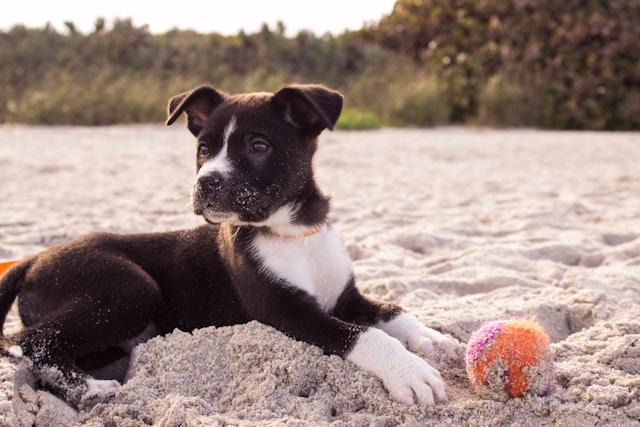Training Tips for New Dog Owners: The Ultimate Guide

Bringing a new dog into your home is a joyous occasion, but it also comes with the responsibility of training. Proper training is essential for a well-behaved, happy, and healthy dog. Whether you’re welcoming a playful puppy or an adult dog, this ultimate guide will provide you with essential training tips to ensure success.
1. Understand Your Dog’s Breed and Personality
Every dog is unique, and understanding your dog’s breed and personality traits will help tailor your training approach.
Breed Characteristics
- High-Energy Breeds: Breeds such as Border Collies, Australian Shepherds, and Labrador Retrievers need a lot of physical and mental stimulation. Their training should include activities that challenge them both physically and mentally.
- Low-Energy Breeds: Breeds like Bulldogs, Shih Tzus, and Basset Hounds have lower energy levels and may require shorter training sessions with less vigorous exercise.
- Intelligent Breeds: Breeds such as Poodles and German Shepherds are quick learners but can get bored easily. Their training should be varied and engaging.
- Stubborn Breeds: Breeds like Dachshunds and Afghan Hounds might be more challenging to train and may require extra patience and persistence.
Personality Traits
Observe your dog’s behavior to better tailor your training approach:
- Shy or Fearful Dogs: Use gentle, positive reinforcement to build their confidence and comfort.
- Outgoing and Confident Dogs: Challenge them with complex commands and diverse activities to keep them engaged.
2. Establish a Consistent Routine
Dogs thrive on routine, which helps them feel secure and understand what is expected of them.
Daily Routine
- Feeding Schedule: Feed your dog at the same times each day to establish a sense of security and predictability.
- Exercise: Incorporate daily walks, play sessions, and mental stimulation to keep your dog healthy and happy.
- Training Sessions: Conduct short, frequent training sessions (5-10 minutes, 2-3 times daily) to maintain focus and reinforce learning.
3. Use Positive Reinforcement
Positive reinforcement is the most effective and humane training method, focusing on rewarding desirable behaviors rather than punishing undesirable ones.
Rewards
- Treats: Use small, high-value treats that your dog finds irresistible. This keeps them motivated and eager to learn.
- Praise: Verbal praise and affection are great motivators. Consistently reward good behavior with enthusiastic praise.
- Toys: Incorporate your dog’s favorite toys into training sessions to make them more enjoyable.
Timing
- Immediate Reward: Provide rewards immediately after your dog performs the desired behavior to help them connect the action with the reward.
- Consistency: Be consistent with the rewards you use and the timing to avoid confusion and reinforce learning.
4. Set Clear and Achievable Goals
Establishing clear, achievable goals helps track progress and keeps training focused.
Basic Commands
Start with fundamental commands that serve as a foundation for further training:
- Sit: A basic command that is the cornerstone of many other commands.
- Stay: Teaches impulse control and patience.
- Come: Essential for safety and recall in various situations.
Advanced Training
Once your dog masters basic commands, move on to more advanced training:
- Heel: Teaching your dog to walk calmly beside you on a loose leash.
- Leave It: Helps your dog ignore distractions or potentially harmful items.
- Fetch: A fun way to exercise and reinforce recall.
5. Avoid Common Training Mistakes
New dog owners often make mistakes that can hinder the training process. Being aware of these common pitfalls will help you avoid them.
Inconsistency
Inconsistent commands or rewards can confuse your dog. Always use the same commands and reward system to provide clarity.
Punishment-Based Training
Punishing your dog for mistakes can lead to fear and anxiety. Focus on positive reinforcement and redirecting undesirable behaviors instead.
Overtraining
Training sessions that are too long or too frequent can lead to frustration. Keep sessions short and engaging, ending on a positive note to maintain motivation.
6. Socialize Your Dog
Socialization is crucial for helping your dog become well-adjusted and comfortable in different environments.
Early Socialization
- Puppies: Introduce them to various experiences, people, and other dogs in a controlled manner to build their confidence.
- Adult Dogs: Gradually expose them to new situations and stimuli to help them adapt and feel secure.
Ongoing Socialization
Continue to expose your dog to new experiences throughout their life to prevent behavioral issues and ensure they remain well-adjusted.
7. Address Behavioral Issues Early
Early intervention is key to managing behavioral issues before they become more serious.
Barking
- Identify Triggers: Determine why your dog is barking—whether it’s boredom, anxiety, or alertness.
- Training: Use positive reinforcement to reward quiet behavior and redirect attention.
Chewing
- Provide Alternatives: Offer appropriate chew toys and redirect your dog’s chewing to these items.
- Supervision: Monitor your dog and limit access to items you don’t want them to chew.
Jumping Up
- Ignore Jumping: Avoid giving attention when your dog jumps up. Instead, reward them when they keep their paws on the ground.
8. Seek Professional Help if Needed
Sometimes, professional help is needed to address more complex training issues or behavioral problems.
Choosing a Trainer
- Qualifications: Look for trainers with certifications from reputable organizations to ensure they use effective methods.
- Methods: Ensure their training approach aligns with positive reinforcement techniques.
Group Classes
- Socialization: Group classes offer valuable socialization opportunities and help reinforce training in a controlled environment.
- Community: They provide a supportive community of fellow dog owners and trainers.
9. Build a Strong Bond with Your Dog
Training is not just about commands but also about strengthening your relationship with your dog. A strong bond makes training more effective and enjoyable.
Playtime
Incorporate fun activities like fetch, tug-of-war, and puzzle toys into your routine to enhance your dog’s enjoyment and engagement.
Affection
Show love and affection through petting, praise, and spending quality time together. A strong bond contributes to a happy and well-behaved dog.
10. Be Patient and Persistent
Training is a gradual process that requires patience and persistence. Every dog learns at their own pace, and setbacks are a natural part of the process.
Celebrate Progress
Acknowledge and celebrate small successes to keep both you and your dog motivated. Recognize and reward progress to reinforce positive behavior.
Adapt as Needed
Be flexible and willing to adjust your training methods based on your dog’s progress and needs. If one approach isn’t working, try a different method or seek professional advice.
Training your new dog is a rewarding journey that requires understanding, patience, and dedication. By following these tips and focusing on positive reinforcement, consistency, and building a strong bond, you’ll set the foundation for a well-behaved and happy companion. Enjoy the process, celebrate the milestones, and cherish the moments you share with your new furry friend.




